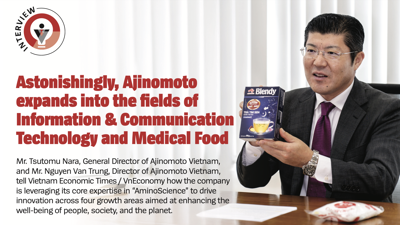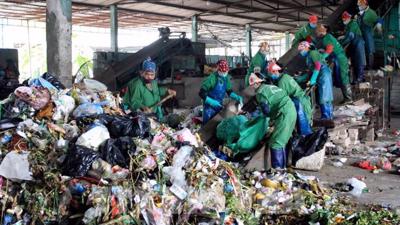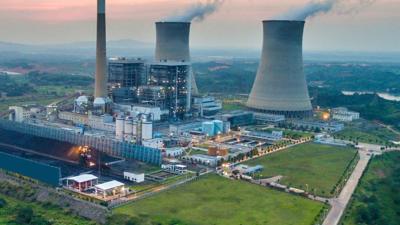Important developments in energy transition associated with nuclear power
With green and clean energy transformation becoming an inexorable trend, Mr. Brett Paquin, Director (Nuclear) at the Crown Investment Corporation (CIC) in Saskatchewan province, Canada, tells VnEconomy / Vietnam Economic Times/ Tap chi Kinh te Viet Nam about nuclear energy development in Canada and the experience to be shared with Vietnam.
Could you tell us about the strategy and policy for nuclear energy development in Saskatchewan focusing on Small Modular Reactors (SMRs)?
The strategy really began in 2018, with what was called the SMR roadmap, and this was essentially like a ten-month cross-country conversation that really established a vision of the development of SMRs in Canada. And this roadmap then led to an SMR action plan two years later, in 2020.
The action plan was really a collaborative effort between many stakeholders across the country. This included the federal government, the various provinces and territories, indigenous peoples and communities, power utilities, industry, research laboratories, and post-secondary institutions. So each of these stakeholders identified actions that they would complete that would contribute to this broader SMR action plan. And this led to a total of 520 actions, which are still being pursued and accomplished to this day. So, we still have regular reporting requirements on all these actions and the action plan is very much a big part of nuclear development in Canada today.
This also enabled a lot of collaboration among stakeholders in Canada. One typical example is four provinces in Canada - Saskatchewan, Ontario, New Brunswick, and Alberta - signing an MoU that aims for them to work together as provincial governments to develop SMR, including technology readiness, grid scale considerations, SMRs, micro SMRs, and advanced reactors, and regulatory frameworks on economics and finance.
The MoU also looks at nuclear waste management and considers the participation of local people and communities. Therefore, although this MoU formally concluded in 2022, the collaboration between the provinces continues to this day. In Saskatchewan, we still regularly meet with our provincial counterparts, and this is all because of that initial SMR action plan that was established in 2020.
What are the benefits and advantages when developing SMR in particular and nuclear energy in general?
SMRs have a lot lower capital investment than large reactors, so that makes them a little less risky, and they can also be scalable. Therefore, multiple SMRs can be deployed depending on the needs of each location. In Canada, for example, one province has plans to apply for SMRs because they are a larger province with more electricity demand. But in Saskatchewan, where I reside, we are starting with one SMR because we are a smaller province with less electricity demand.
There is also a lot more siting flexibility with SMRs. Large reactors require a lot of water cooling, and with SMRs you still require water with most technologies, but it’s a lot less water. That allows you more flexibility with where you can cite the SMR, and a lot of the more advanced designs don’t even require water for cooling, increasing the flexibility of where they can be sited.
There are multiple applications for nuclear energy. Currently, in Canada, we have what are called CANDU (Canada Deuterium Uranium) reactors, which are large reactors that provide electricity. We can consider using nuclear energy for industrial decarbonization. They can be used at large locations that require electricity and heat. While the advanced reactors and SMRs can provide electricity, they can also provide heat for the industrial uses. It could also even be used for remote communities in the northern parts of Canada, to provide electricity and heat for houses. We obviously have a very cold climate here in Canada, so we do rely on natural gas or diesel to heat our homes. So there is an opportunity to reduce that reliance on fossil fuels and utilize micro reactors to provide electricity and heat to other communities.
I think there are significant opportunities, global opportunities, and there are projections that the nuclear industry could be a $150-billion industry by 2040. As you know, there have been a lot of commitments made by countries around the world at COP28 to triple nuclear generation by 2050. So, there are significant developments and significant opportunities associated with nuclear power.
No SMRs have been constructed as yet, but the province of Ontario plans to construct four of 300 MW each. The first will likely be operational in 2029. And then, in Saskatchewan, we are pursuing our first SMR, which will be operational in 2034. And the decision to pursue that will happen in 2029.
What are the key factors in building and developing SMRs?
There are probably three main key considerations. The first is economic opportunity. Bringing nuclear energy creates jobs that require skilled labor. It provides opportunities for local businesses and local manufacturers and suppliers. It is an opportunity for them to participate in the nuclear supply chain and industries.
Second is energy security. In Canada, we are the second-largest producer of uranium in the world. So, we already have the resources for nuclear energy. That’s a big consideration, but it’s also more than just uranium production. Having a diverse supply of electricity generation contributes to energy security and contributes to a reliable and affordable electricity network.
Thirdly, and probably the most obvious, is the energy transition. As other countries transitioning to net-zero electricity grids have found, there are very few non-emitting electricity sources. Hydro is one. In Canada, we have a lot of hydro-electricity resources. But in the province of Saskatchewan, we don’t have a lot of hydro resources. So, we are reliant on fossil fuels currently, which is coal and natural gas. As we transition away from fossil fuels, we need to replace that energy with another low non-emitting baseload source. And that is why we are pursuing nuclear energy.
What are the challenges in developing SMRs?
One is definitely the cost. Nuclear does have a very good track record of coming in on time or on budget. That’s a major consideration that requires a lot of high upfront capital investment. But the nice thing with nuclear is that plants typically last a lot longer than other generation sources. So, when you look at the overall cost of electricity, it’s fairly competitive with other generation sources.
One challenge we are finding here in Canada is the labor market. Do we have enough workers, skilled workers, to develop all of these new facilities? We’re competing with other sectors here in Canada. That’s a major consideration.
Canada also has a regulatory environment, so we have a lot of strict environmental regulations to follow, and there is a risk that those strict regulatory requirements could slow the development of nuclear power.
What experiences could be shared with Vietnam on developing SMRs in particular and nuclear power in general?
My suggestion would be that if Vietnam is seriously considering developing SMRs or nuclear power, it needs to start now. As I mentioned, in Canada, we started looking at SMRs in 2018, five or six years ago, but there has still not been one developed. So, it takes a long time to plan, and it takes a long time to get regulations, to get supply chains, to get workers qualified. There is a lot involved in nuclear energy production. It is very complex and there are a lot of safety requirements, as there should be.







![[Interactive]: Economic overview - April 2025](https://media.vneconomy.vn/400x225/images/upload/2025/05/06/5a245778-67b1-4874-a8dc-21f8cfed62a6.png)